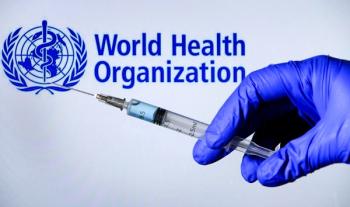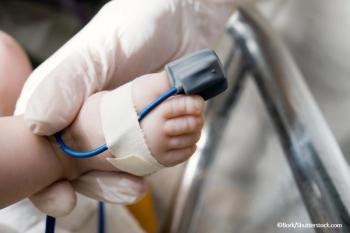
Kidney Graft Rejection Lower With Thymoglobulin
ST. LOUIS -- High-risk kidney transplant recipients had a lower rate of acute rejection and severe rejection episodes when they received induction therapy with Thymoglobulin (rabbit antithymocyte globulin) compared with Simulect (basiliximab).
ST. LOUIS, Nov. 9 -- High-risk kidney transplant recipients had a lower rate of acute rejection and severe rejection episodes when they received induction therapy with Thymoglobulin (rabbit antithymocyte globulin) compared with Simulect (basiliximab).
Induction therapy with antithymocyte globulin did not, however, reduce the rate of delayed graft function, patient survival, or graft survival compared with Simulect, reported Daniel C. Brennan, M.D., of Washington University, and colleagues in the multicenter Thymoglobulin Induction Study Group.
Dr. Brennan said the results of the study, which were reported in the Nov. 9 issue of the New England Journal of Medicine, showed "that anti-thymocyte globulin is an important weapon for fighting kidney rejection. A 10% difference in acute rejection between the two groups may not seem like a lot, but in these high-risk patients it is very significant."
The authors compared two common approaches to induction therapy. They evaluated animal-derived antithymocyte globulin, which has a long history in transplantation, and a newer strategy using anti-interleukin-2 receptor monoclonal antibodies.
Nearly two-thirds of all renal graft recipients receive induction therapy -- a short, intensive regimen of immunosuppression given in the perioperative period -- with the goal of reducing the risk of acute rejection in the critical first weeks following a transplant.
Induction is thought to be particularly helpful in cases where there are one or more donor or recipient risk factors, noted Michelle A. Josephson, M.D., of the University of Chicago, in an accompanying editorial.
"Since transplantation of a kidney (even from a "marginal" donor) portends a survival advantage as compared with continued dialysis, the trend toward using available kidneys (even if they are less than perfect) is reasonable," she wrote. "We must therefore define strategies that will maximize the outcome of transplantation with these kidneys."
In a prospective randomized study, Dr. Brennan and colleagues at centers in the United States and Europe compared short courses of either Thymoglobulin or Simulect in 278 high-risk patients.
Donor risk factors were:
- Cold ischemia for more than 24 hours
- Donor more than 50 years-old
- Non-heart beating donor
- Acute tubular necrosis in donor graft
- Donor requiring high-dose inotropic medications (associated with increased risk of renal failure).
Recipient risk factors were:
- Repeat transplantation
- Panel-reactive antibody value more than 20% before transplantation (quantifies antibodies against the general pool of potential donors)
- Black race
- One or more HLA antigen mismatches with the donor.
The patients, who were taking an immunosuppressive regimen consisting of Neoral (cyclosporine), CellCept (mycophenolate mofetil), and prednisone, were randomly assigned to Thymoglobulin at 1.5 mg/kg daily during transplantation (day 0) and on days one through four, or Simulect 20 mg on days 0 and four.
The primary study endpoint was a composite of acute rejection, delayed graft function, graft loss, and death. Delayed graft function was defined as the need for dialysis within the first week after transplantation. Slow graft function was defined as a serum creatinine level that exceeded 3.0 mg/dL on day five but did not require treatment with dialysis.
The investigators found that at 12 months the composite endpoint was similar between the two groups, at 50.4% for Thymoglobulin, and 56.2% for Simulect (P=0.34).
The rate of biopsy-proven acute rejection was lower among patients who received the antithymocyte globulin compared with those who received the monoclonal antibody, at 15.6% and 25.5%, respectively (P=0.02).
The rate of acute rejection tended to be lower among black and non-black patients who received Thymoglobulin, compared with those who received Simulect. The rate of acute rejection did not differ significantly between blacks and non-blacks when treatment groups were combined (P =0.14).
"There were no episodes of rejection with a Banff grade of III (a severe episode of rejection consisting of marked arteritis involving the intima or transmural arteritis with fibrinoid deposits and necrosis of the medial smooth muscle cells)," the authors reported.
Severe rejection, defined as need for antibody therapy occurred in 1.4% of patients on Thymoglobulin, compared with 8.0% for those on Simulect (P=0.005).
There were no significant differences, however, in the rates of delayed graft function between the Thymoglobulin (40.4%) and the Simulect group (44.5%, P=0.54) or in the incidence of slow graft function, at 23.4% and 26.3%, respectively (P=0.49).
The mean number of hemodialysis treatments was similar between the groups (P=0.62). There were also no significant differences in the incidence of graft loss, which was 9.2% for patients receiving Thymoglobulin, and 10.2% for those getting Simulect (P=0.68).
The mortality rate was 4.3% for patients on Thymoglobulin, and 4.4% for those on Simulect, and the causes for graft loss and death were similar.
The rates of all adverse events, serious adverse events, and cancers were similar between the two groups, except that patients receiving Thymoglobulin had more infection (85.8% vs. 75.2%, P=0.03), but less cytomegalovirus disease (7.8% vs. 17.5%, P=0.02).
Dr. Brenan said that the excess cost of Thymoglobulin (,000 to ,000 per patient, compared with about ,000 per patient for Simulect) would likely be offset by the lower rate of acute rejection.
"The cost to society for every episode of kidney rejection is extremely high," he said. "While further study is warranted, we suspect anti-thymocyte globulin will be important not only for patients at high risk for rejection but for all kidney transplant patients."
In her editorial, Dr. Josephson commented that 12 months may have been too little follow-up time to detect a significant difference between the treatment groups for the composite endpoint of acute rejection, delayed graft function, graft loss, and death.
"Perhaps neither longer follow-up nor another end point would have made a difference and this study exemplifies the two-headed monster that is immunosuppression," she wrote.
"On the one hand, immunosuppression may be less than sufficient and lead to rejection, as seen in the basiliximab group. On the other hand, immunosuppression may be more than sufficient and lead to cancer and infection. Though not significant, the incidence of cancer tended to be higher in the antithymocyte globulin group than in the basiliximab group, a trend that could increase over time."
The jury is still out on which induction therapy strategy will prove to be better over the longer term, she concluded.
Newsletter
Enhance your clinical practice with the Patient Care newsletter, offering the latest evidence-based guidelines, diagnostic insights, and treatment strategies for primary care physicians.

















































































































































































































































































